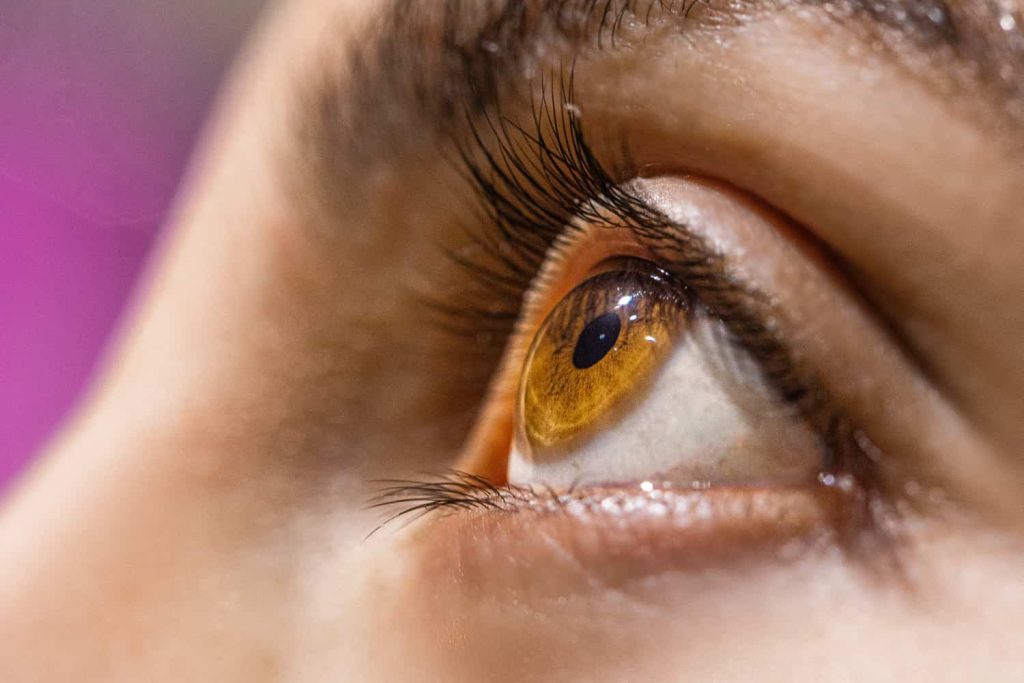
טיפות דמעות – מה זה ולמה משתמשים בהן?
טיפות דמעות הן תמיסות רפואיות או קוסמטיות שמטרתן להקל על
Eyelid twitching (eyelid spasms), medically known as myokymia, is a common phenomenon experienced by people around the world. This usually manifests as an involuntary, repetitive twitch or flutter of the eyelid muscle that can range from a slight, barely noticeable tremor to a more pronounced and irritating tremor. Although usually benign and transient, for some, the occurrence of a popping eyelid may be persistent and cause discomfort in the mild case and a worrisome sign in some cases.

Blepharitis usually affects the upper eyelid, but it may also involve the lower eyelid. The frequency and duration of these spasms can vary significantly. Some people may experience eyelid popping every few seconds for a minute or two, while others may experience them intermittently throughout the day. Usually, they come and go on their own without causing any harm.
Understanding the potential causes of eyelid spasms is the first step in treating this phenomenon. There are several factors that may contribute to a drooping eyelid.
1. Fatigue: One of the most common causes of a popping eyelid is fatigue. When the body is tired, especially after a long day or lack of sleep, the muscles may behave erratically, including those that control the eyelids.
2. Eye strain: The modern lifestyle often includes spending long hours in front of screens, which can lead to eye strain. When the eyes are too tired or strained, they may react with twitching.
3. Caffeine and alcohol: excessive consumption of caffeine and alcohol can stimulate the nervous system, and can lead to involuntary muscle contractions, including twitching of the eyelids.
4. Stress: Stress is a significant trigger for many physical reactions, including twitching of the eyelids. In stressful situations, the body releases hormones that may cause various reactions, one of which may be muscle contractions.
5. Nutritional deficiencies: Certain nutritional deficiencies, such as magnesium deficiency, can contribute to muscle spasms and spasms, including in the eyelids.
6. Dry eyes: Especially common among adults and people who use computers for extended periods, use contact lenses or consume certain medications, dry eyes can cause twitching of the eyelids.
While the causes mentioned above are benign, eyelid spasms can sometimes be a symptom of more serious neurological conditions such as blepharospasm or certain types of dystonia, when the spasms become chronic and may involve other facial muscles. However, these are rare situations, and the vast majority of eyelid twitching cases are harmless and temporary.
While eyelid spasms usually go away on their own without treatment, they can be bothersome. Treating the underlying triggers can help reduce the frequency of these spasms or prevent them altogether. Here are some possible remedies:
1. Adequate rest: Ensuring adequate sleep can ease the occurrence of eyelid spasms, especially if fatigue is the cause.
2. Limiting caffeine and alcohol: If you notice a connection between the eyelid spasms and the consumption of caffeine or alcohol, it may be helpful to reduce the consumption of these two.
3. Eye strain relief and treatment for dry eyes: Take regular breaks from screen time, use artificial tears to moisten your eyes, and practice the 20-20-20 rule, which recommends looking at something 20 meters (distance) away for 20 seconds For every 20 minutes of screen use. In addition, it is recommended to contact a dry eye clinic to rule out blepharitis and dry eyes as a possible cause.
4. Stress management: Techniques such as yoga, meditation and deep breathing exercises can help manage stress levels, and may reduce the incidence of eyelid twitching.
5. Balanced diet: A diet rich in essential vitamins and minerals can help prevent nutritional deficiencies that cause eyelid twitching.
6. Eye drops and eye ointments: For those with dry eyes, preservative-free dry eye drops may provide relief and reduce eyelid twitching. You can turn to more advanced treatments in clinics that specialize in dry eye.
In rare cases, where the convulsions are persistent, interfere with the quality of life or are related to other facial convulsions, it is recommended to seek medical advice. The family doctor may suggest treatments such as Botox injections, muscle relaxants, or, in severe cases, surgery.
It is important to note that most eyelid spasms are harmless and temporary. It is not always possible to identify the exact reason why they occur. Although they may cause temporary annoyance or discomfort, they are usually not a cause for concern.
In conclusion, while a pop-up rash is a common phenomenon, it is usually benign and transient, and resolves spontaneously without the need for medical intervention. However, a more dangerous factor cannot be ruled out without an ophthalmologist's or neurologist's examination. If it persists or is associated with other symptoms, it is recommended to consult a doctor to rule out any underlying condition. In most cases, lifestyle changes can help manage and prevent this minor (but sometimes dangerous) and annoying problem.

טיפות דמעות הן תמיסות רפואיות או קוסמטיות שמטרתן להקל על

ויטמין C הוא אחד הוויטמינים החיוניים ביותר לבריאות העיניים, הודות

מרכז מומחים לאבחון וטיפול מתקדם בתסמונת העין היבשה ומחלות פני שטח העין















